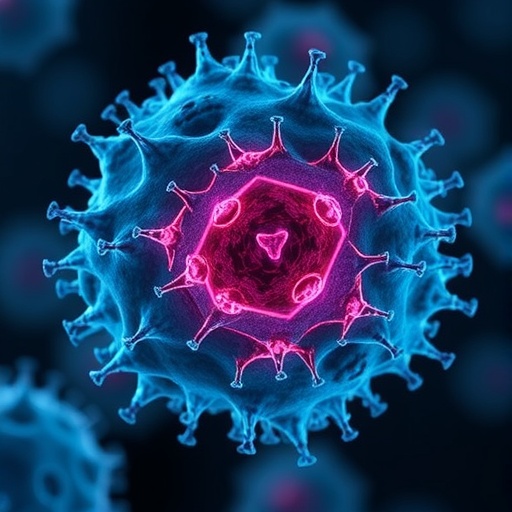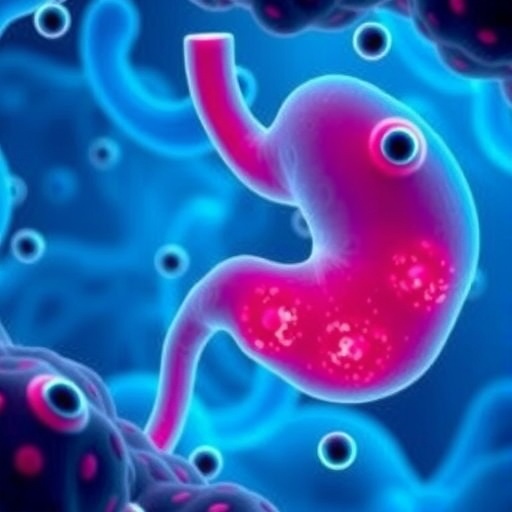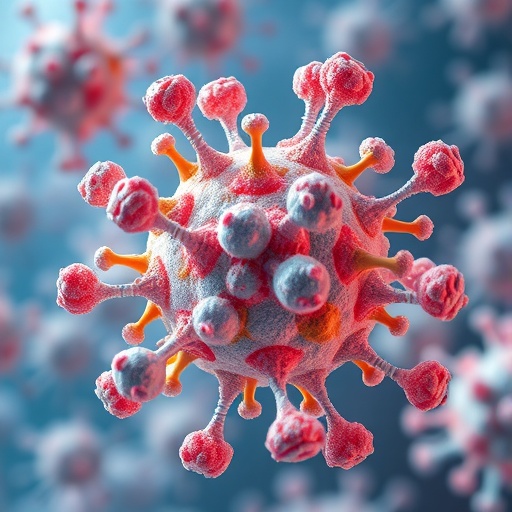
In a groundbreaking discovery that deepens our understanding of tumor biology, researchers at ETH Zurich, led by cell biology professor Sabine Werner, have unveiled a previously unknown mechanism by which certain cancer cells ensure their survival and proliferation within the human body. This novel finding reveals that skin cancer cells can transfer mitochondria—the cell’s vital energy-producing organelles—to neighboring healthy connective tissue cells, known as fibroblasts, effectively reprogramming these cells to support tumor growth.
Mitochondria are crucial intracellular structures responsible for generating adenosine triphosphate (ATP), the primary energy currency in biological systems. The ability of skin cancer cells to shuttle mitochondria into fibroblasts is facilitated by microscopic, membrane-bound tubes that form physical conduits between the cells. These nanoscopic tubes bear a striking functional resemblance to pneumatic tube systems once used to transport physical objects between locations. Such direct mitochondrial transfer represents a fascinating example of intercellular communication hijacked by malignant cells to manipulate their environment favorably.
Upon receiving mitochondria from cancer cells, the fibroblasts undergo a remarkable functional transformation into what are termed tumor-associated fibroblasts (TAFs). These reprogrammed fibroblasts demonstrate increased proliferation rates and enhanced production of ATP, thereby amplifying the metabolic support they provide to the tumor. Moreover, TAFs secrete an elevated level of growth factors and cytokines—signaling molecules that orchestrate cellular activities—fostering a microenvironment conducive to aggressive tumor expansion and invasiveness.
Beyond metabolic and proliferative changes, these hijacked fibroblasts also profoundly alter the extracellular matrix (ECM), the intricate network of proteins and glycoproteins that provide structural support to tissues. By modulating ECM composition, these tumor-associated fibroblasts create a mechanical and biochemical niche that promotes cancer cell survival, invasion, and intercellular communication. This remodeling of the ECM underlines the multifaceted role of fibroblasts not only in tissue homeostasis but also in the dynamic progression of malignancies.
The serendipitous nature of this discovery came to light when postdoctoral researcher Michael Cangkrama observed slender tube-like structures bridging cancer cells and fibroblasts in controlled co-culture environments. These nano-bridges served as channels for mitochondrial passage, a phenomenon previously unexplored in the context of cancer-to-stroma interaction. While mitochondrial transfer between cells has been documented in other physiological contexts—such as neuronal rescue following ischemic stroke—this finding marks a paradigm shift by demonstrating how cancer cells exploit a natural intercellular salvage pathway to their advantage.
Notably, while it has been recognized that stromal cells can transfer mitochondria to tumor cells enhancing tumor fitness, the demonstration of mitochondria transfer in the reverse direction—from cancer cells to fibroblasts—is unprecedented. This bi-directional exchange elucidates a complex crosstalk within the tumor microenvironment, whereby cellular communication and organelle trafficking synergize to bolster tumor growth and resilience.
Further studies at ETH Zurich established that this mitochondrial transfer phenomenon is not exclusive to skin cancer. Evidence now indicates its presence in other malignancies characterized by dense stromal components, such as breast and pancreatic cancers. The latter is especially significant given the notoriously fibrotic nature of pancreatic tumors, where abundant fibroblasts heavily influence disease progression and therapy resistance.
Deciphering the molecular underpinnings of mitochondrial transfer, Werner’s team identified the protein MIRO2 as a key facilitator in this process. MIRO2, known for its role in mitochondrial trafficking within neurons, is highly expressed in cancer cells actively transferring mitochondria. Its presence was particularly concentrated at the invasive fronts of tumors, precisely where cancer cells interact most intimately with the surrounding stroma, including fibroblasts.
Using clinical tissue samples, researchers localized MIRO2 expression to tumor cells at the margins infiltrating connective tissue, corroborating its functional significance in vivo. This localization suggests that MIRO2-mediated mitochondrial transfer is a critical mechanism that tumors leverage during invasion and metastasis. Importantly, inhibiting MIRO2 expression or function effectively blocked mitochondrial transfer in both laboratory cell cultures and preclinical mouse models, preventing fibroblast reprogramming and dampening tumor-supportive activities.
These findings open promising avenues for therapeutic intervention. Targeting MIRO2 to disrupt mitochondrial transfer could impair the tumor’s ability to reprogram its microenvironment, thereby stalling progression and metastasis. However, the transition from laboratory models to human applications remains a formidable challenge. Potential MIRO2 inhibitors will require rigorous development to ensure specificity, minimal side effects, and clinical efficacy.
While the timeline for clinical translation remains uncertain, this discovery sets the stage for innovative cancer treatments centered around disrupting the metabolic and cellular dialogue between tumor cells and their stroma. Through such interventions, it may become possible to curtail tumor growth by dismantling the support systems that cancer cells covertly establish within their microenvironment.
As cancer research advances, understanding and intercepting intercellular interactions such as mitochondrial transfer will be critical for developing next-generation therapies. The ETH Zurich team’s work is a testament to how fundamental cellular mechanisms, once uncovered, can reveal hidden vulnerabilities in the seemingly invincible nature of malignant tumors.
Subject of Research:
Mitochondrial transfer from cancer cells to fibroblasts and its role in tumor progression.
Article Title:
MIRO2-mediated mitochondrial transfer from cancer cells induces cancer-associated fibroblast differentiation.
News Publication Date:
28-August-2025
Web References:
https://doi.org/10.1038/s43018-025-01038-6
References:
Cangkrama M, Liu H, Wu X, et al. MIRO2-mediated mitochondrial transfer from cancer cells induces cancer-associated fibroblast differentiation. Nature Cancer. 28 August 2025. DOI: 10.1038/s43018-025-01038-6
Image Credits:
Michael Cangkrama / ETH Zurich / BioRender
Keywords:
Mitochondrial transfer, cancer-associated fibroblasts, tumor microenvironment, MIRO2 protein, skin cancer, intercellular communication, extracellular matrix remodeling, tumor progression, mitochondrial trafficking, stromal reprogramming, therapeutic targeting, cancer metabolism
Tags: cancer cell survival mechanismsenergy production in cancer microenvironmentETH Zurich cancer researchfibroblast transformation in tumorsintercellular communication in tumorsmetabolic support for cancer growthmitochondrial transfer in cancernovel cancer treatment targetsreprogramming healthy cells in cancerskin cancer cell biologytumor microenvironment interactionstumor-associated fibroblasts




